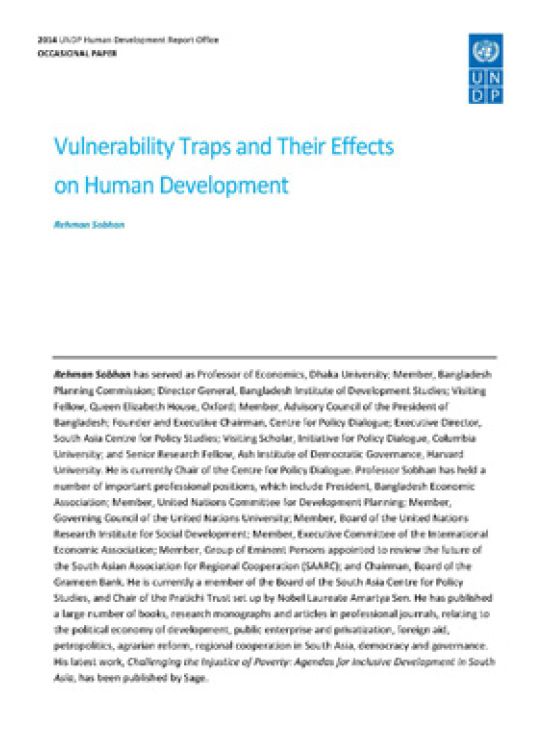Vulnerability Traps and Their Effects on Human Development

Download Report by Language
Document
sobhanhdr2014.pdf
(1.09 MB)
Citation
Rehman Sobhan. 2014. Vulnerability Traps and Their Effects on Human Development. New York.
Vulnerability Traps and Their Effects on Human Development
Posted on: January 01, 2014
This paper explores asymmetrical risks that leave some people more vulnerable than others, and relates these asymmetries to the structurally derived variations in socioeconomic circumstances. It focuses on vulnerabilities originating in inequitable opportunity structures, examining their nature and how they may trap particular segments of the population in poverty. It goes on to relate these traps to the unjust socio-economic circumstances that create and perpetuate them. Particular areas of disadvantage that condition the vulnerability of people include educational disparities, health disadvantages, inequitable ownership of productive assets, asymmetrical exposure to market forces and unjust governance. An agenda for correcting some of these disadvantages could include universalizing social protection through social provisioning that minimizes vulnerably by guaranteeing the right to work, food, education and health care. A second essential element is moving beyond the resort to social provisioning by initiating structural changes that elevate the excluded from living out their lives exclusively as wage earners and tenants. A concluding section of the paper argues that all change, including a more structurally focused programme of social protection, needs to address political economy issues that will underwrite advancements.

